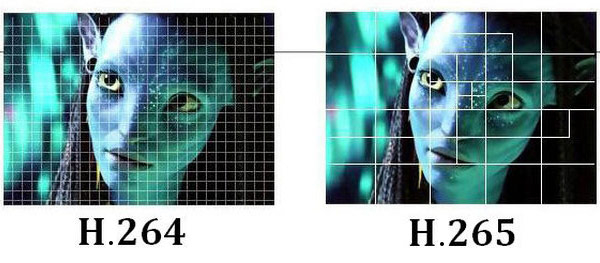The Power Behind the H.265 Standard
The High-Efficiency Video Coding (HEVC) protocol, also known as H.265, was developed as a successor to H.264 by the Joint Collaborative Team on Video Coding (JCT-VC) in 2013. The H.265 protocol reduces the bit rate required for streaming video compared to H.264 while maintaining comparable video quality.
High-Efficiency Video Coding (HEVC) is a video compression standard offering double the data compression ratio at the same or higher level of video quality and the same bitrate as Advanced Video Coding (AVC), also referred to as H.264 or MPEG-4 Part 10 – a video compression standard based on block-oriented, motion-compensated coding. HEVC supports resolutions up to 8192×4320, which includes 8K ultra-high definition.
Due to the complexity of the new H.264 encoding/decoding protocol, more advanced processing is required. However, advantages such as lower latency can be realized with H.265.
Some manufacturers, such as RGB Spectrum, use both H.264 and H.265 streaming protocols. For example, RGB Spectrum Zio decoders can decode both H.264 and H.265 streams. This allows the customer to use whichever protocol is appropriate for the application. In addition to its ability to reduce the bit rate required for streaming video while maintaining comparable video quality, H.265 also offers several other benefits. One of the most significant advantages of H.265 is its ability to support higher resolutions and frame rates. This makes it ideal for use in applications such as video surveillance, where high-resolution video is required to capture fine details.
Another key advantage of H.265 is its support for 10-bit and 12-bit color depth, which provides a more accurate color representation than the 8-bit color depth supported by H.264. This is especially important for applications such as digital cinema, where accurate color representation is critical.
H.265 also supports a wider range of video formats, including HDR (High Dynamic Range) and 360-degree video. HDR provides a wider range of colors and higher contrast ratios, resulting in a more vibrant and lifelike viewing experience. Meanwhile, 360-degree video allows viewers to experience a fully immersive video experience by capturing a 360-degree view of the environment.
While H.265 offers many benefits, its use has some limitations. One of the main limitations is the requirement for more advanced processing power, which can increase the cost of hardware and infrastructure needed to support H.265 video streams. Additionally, not all devices support H.265, which can limit its adoption in some applications.
Despite these limitations, H.265 is rapidly gaining popularity as more and more devices and applications begin to support the protocol. With its ability to support higher resolutions and frame rates, more accurate color representation, and a wider range of video formats, H.265 is poised to become the standard for high-quality video compression in the years to come.
Компания RGB Spectrum — ведущий разработчик и производитель критически важных аудиовизуальных решений в режиме реального времени для гражданских, правительственных и военных организаций. Компания предлагает интегрированное оборудование, программное обеспечение и системы управления для реализации самых высоких стандартов. С 1987 года RGB Spectrum помогает своим клиентам принимать лучшие решения.Better Decisions. Faster.™


